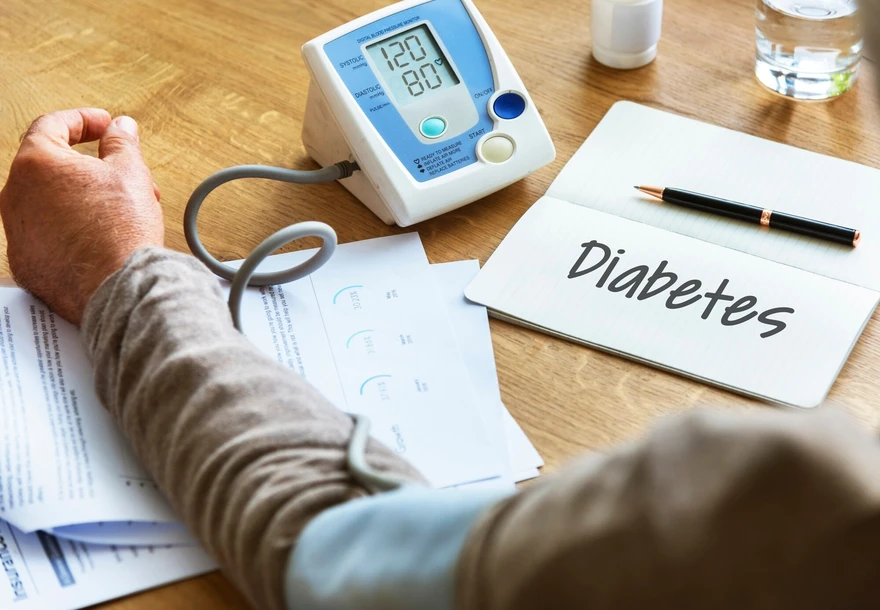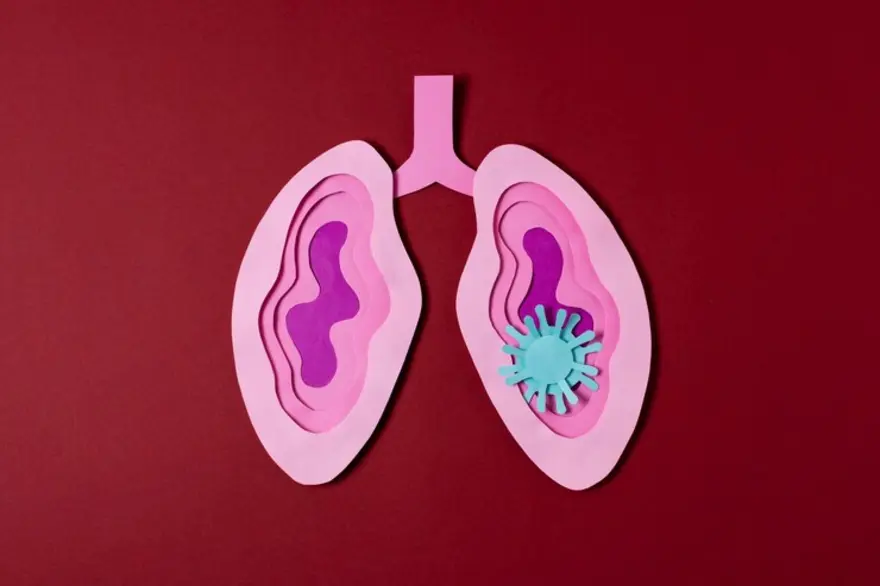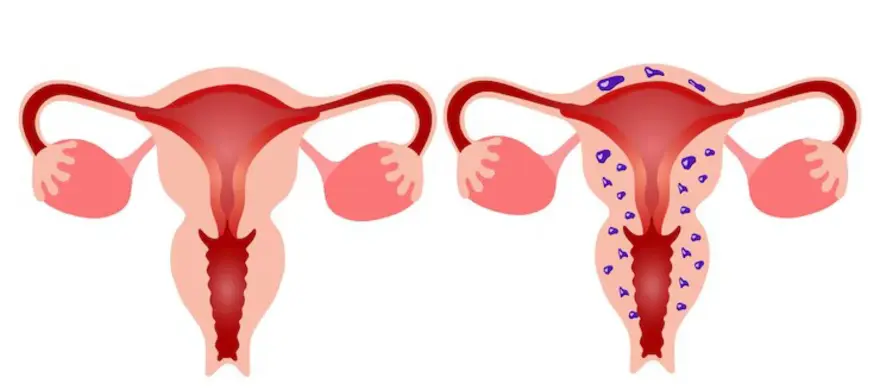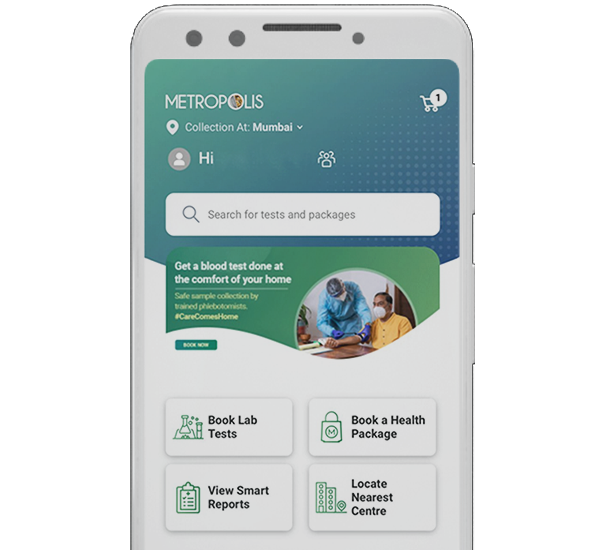Latest Blogs
मानसून में होने वाली आम बीमारियाँ और उनसे बचाव के तरीके
परिचय मानसून गर्मी से ज़रूरी राहत देता है, लेकिन यह अपने साथ स्वास्थ्य सम्बंधित कई चुनौतियाँ भी लेकर आता है। वातावरण में नमी और स्थिर पानी कई तरह के रोगाणुओं के लिए प्रजनन स्थल बन जाते हैं, जिससे मानसून में बीमारियाँ बढ़ जाती हैं। इस समय अच्छा स्वास्थ्य बनाए रखने के लिए, इन बरसाती बीमारियों को समझना और इनसे बचाव के तरीके जानना ज़रूरी है। मानसून में होने वाली बीमारियों की सूची डेंगू डेंगू एक वायरल बीमारी है जो एडीज मच्छर द्वारा फैलती है, जो स्थिर पानी में पनपती है। डेंगू के लक्षणों में तेज बुखार, तेज सिरदर्द, आँखों के पीछे दर्द, जोड़ों और मांसपेशियों में दर्द, रैश और ब्लीडिंग शामिल हैं। चिकनगुनिया चिकनगुनिया मच्छरों द्वारा फैलने वाली एक और वायरल बीमारी है, जिसमें तेज बुखार, जोड़ों में तेज दर्द, मांसपेशियों में दर्द, सिरदर्द, थकान और रैश होते हैं। जोड़ों का दर्द कमज़ोर कर देने वाला हो सकता है और हफ़्तों तक रह सकता है। मलेरिया मलेरिया प्लास्मोडियम पैरासाइट के कारण होता है, जो संक्रमित एनोफिलीज मच्छर के काटने से फैलता है। लक्षणों में तेज़ बुखार, ठंड लगना, पसीना आना, सिरदर्द, मतली और उल्टी शामिल हैं। टाइफाइड टाइफाइड एक बैक्टीरियल इन्फेक्शन है जो दूषित भोजन और पानी से फैलता है। यह लंबे समय तक बुखार, कमज़ोरी, पेट में दर्द, सिरदर्द और भूख न लगना जैसी समस्याओं से जुड़ा है। गंभीर मामलों में, आंतों से खून बह सकता है। वायरल फीवर वायरल फीवर विभिन्न वायरस के कारण होने वाले इन्फेक्शन को कहते हैं। लक्षणों में तेज़ बुखार, शरीर में दर्द, मांसपेशियों में दर्द, सिरदर्द, थकान और कभी-कभी रैश हो सकते हैं। ये संक्रमण आमतौर पर खुद ही ठीक हो जाते हैं लेकिन अनकम्फर्टेबल हो सकते हैं। इन्फ्लूएंजा इन्फ्लूएंजा या फ्लू इन्फ्लूएंजा वायरस के कारण होने वाला एक कॉन्टेजियस सांस की बीमारी है। लक्षणों में बुखार, ठंड लगना, खांसी, गले में खराश, बहती या भरी हुई नाक, शरीर में दर्द, सिरदर्द, थकान, कभी-कभी उल्टी और दस्त शामिल हैं। हैजा (कॉलरा) हैजा (कॉलरा) बैक्टीरिया विब्रियो कोलेरा के कारण होने वाला एक दस्त इन्फेक्शन है। यह दूषित पानी और भोजन से फैलता है और गंभीर डिहाइड्रेशन का कारण बनता है, जो तुरंत इलाज न किए जाने पर घातक हो सकता है। पीलिया पीलिया एक ऐसी स्थिति है जिसमें ब्लड में बिलीरुबिन के हाई लेवल के कारण त्वचा और आंखों में पीलापन होता है। यह विभिन्न कारकों के कारण हो सकता है, जिसमें हेपेटाइटिस जैसे लिवर इन्फेक्शन शामिल हैं। हेपेटाइटिस A और E हेपेटाइटिस A और E दूषित भोजन और पानी से फैलने वाले वायरल लिवर इन्फेक्शन हैं। लक्षणों में पीलिया, थकान, पेट में दर्द, भूख न लगना और मतली शामिल हैं। हेपेटाइटिस E गर्भवती महिलाओं के लिए विशेष रूप से खतरनाक है। सर्दी और फ्लू तापमान और ह्यूमिडिटी में उतार-चढ़ाव के कारण मानसून के दौरान सर्दी और फ्लू आम है। इसके लक्षणों में बहती या भरी हुई नाक, गले में खराश, खांसी, शरीर में दर्द, सिरदर्द और बुखार शामिल हैं। लेप्टोस्पायरोसिस लेप्टोस्पायरोसिस एक बैक्टीरियल इन्फेक्शन है जो इन्फेक्टेड जानवरों के यूरिन द्वारा दूषित पानी के संपर्क में आने से फैलता है। इससे तेज़ बुखार, सिरदर्द, ठंड लगना, मांसपेशियों में दर्द, उल्टी, पीलिया और लाल आँखें हो सकती हैं। पेट फ्लू पेट फ्लू या वायरल गैस्ट्रोएंटेराइटिस, आंतों का इन्फेक्शन है, जिसमें पानी जैसे दस्त, पेट में दर्द, मतली और उल्टी और कभी-कभी बुखार होता है। यह दूषित भोजन या पानी से फैलता है। मानसून में होने वाली विभिन्न बीमारियों से खुद को बचाने के लिए रोकथाम की टिप्स स्थिर पानी, बढ़ी हुई नमी और कीड़ों की अधिकता के कारण मानसून में होने वाली विभिन्न बीमारियां बढ़ जाती हैं। इन बरसाती बीमारियों से खुद को बचाने के लिए यहाँ कुछ प्रभावी रोकथाम के सुझाव दिए गए हैं। व्यक्तिगत स्वच्छता बनाए रखें मानसून के दौरान बीमारियों से बचने के लिए व्यक्तिगत स्वच्छता बनाए रखना महत्वपूर्ण है। अपने हाथों को साबुन और पानी से धोएँ, खासकर बारिश के पानी के संपर्क में आने के बाद। अपने नाखूनों को छोटा रखें और गंदे हाथों से अपने चेहरे को छूने से बचें। स्वच्छ पानी पिएं बारिश के मौसम में हैजा, टाइफाइड और गैस्ट्रोएंटेराइटिस जैसी वाटर बॉर्न बीमारियाँ आम हैं। सुनिश्चित करें कि आप केवल शुद्ध या उबला हुआ पानी पिएं। अगर आप नल के पानी पर निर्भर हैं, तो वाटर प्यूरीफायर का उपयोग मानसून की बीमारियों की रोकथाम में मदद कर सकता है। ताज और घर का बना खाना खाएं दस्त और फूड पॉइजनिंग जैसी खाद्य जनित बीमारियों से बचने के लिए, ताजा और अच्छी तरह से पका हुआ खाना खाएं। स्ट्रीट फूड से बचें और खाने से पहले फलों और सब्जियों को अच्छी तरह धोएं। मॉस्किटो रिपेलेंट का इस्तेमाल करें डेंगू, मलेरिया और चिकनगुनिया जैसी बीमारियाँ मच्छरों से फैलती हैं, जो स्थिर पानी में पनपते हैं। मच्छरों के काटने को कम करने के लिए मॉस्किटो रिपेलेंट, नेट्स का इस्तेमाल करें और लंबी स्लीव वाले कपड़े पहनें। पानी इकट्ठा करने वाले बर्तन जैसे कि फूलदान और बाल्टी को साफ रखें, ताकि मच्छरों के पनपने की जगह कम हो। अपने आस-पास की जगह को साफ रखें मानसून में होने वाली बीमारियों की रोकथाम के लिए साफ-सुथरा वातावरण होना ज़रूरी है। सुनिश्चित करें कि आपके आस-पास के इलाके में स्थिर पानी ना हो, जो मच्छरों के पनपने का स्थान हो सकता है। कचरे का सही तरीके से निपटान करें और सुनिश्चित करें कि पानी जमा होने से रोकने के लिए नालियाँ और गटर बंद न हों। बारिश से खुद को बचाएं बारिश में भीगने से इन्फेक्शन और बीमारियाँ हो सकती हैं। खुद को बचाने के लिए छाता लेकर जाएं या रेनकोट पहनें। फंगल इन्फेक्शन से बचने के लिए गीले कपड़े तुरंत बदलें और खुद को अच्छी तरह से सुखाएं। अपनी इम्युनिटी बढ़ाए बारिश के मौसम में होने वाली बीमारियों से लड़ने के लिए एक इम्यून सिस्टम बहुत ज़रूरी है। अपनी डाइट में इम्युनिटी बढ़ाने वाले खाद्य पदार्थ शामिल करें, जैसे कि विटामिन C से भरपूर फल, सब्जियाँ और दही जैसे प्रोबायोटिक्स। हाइड्रेटेड रहना और पर्याप्त मात्रा में नींद लेना भी हेल्थी इम्यून सिस्टम में योगदान दे सकता है। वैक्सीनेशन और मेडिकल एडवाइस अपने डॉक्टर से उन वैक्सीनेशन के बारे में सलाह लें जो आपको मानसून रोगों से बचा सकते हैं। मेडिकल एडवाइस फॉलो करें, खासकर अगर आपको कोई बीमारी है जो आपको बरसात के मौसम में इन्फेक्शन होने की संभावना है। जागरूकता और सक्रिय उपाय मानसून की बीमारियों को दूर रखने में मदद करते हैं। निष्कर्ष मानसून के दौरान बरसात के मौसम में होने वाली बीमारियाँ और उनकी रोकथाम ज़रूरी है। साफ-सफाई और व्यावहारिक स्वच्छता बनाए रखने से इन मानसूनी बीमारियों के जोखिम को कम करने में मदद मिल सकती है। अगर आप उपरोक्त में से कोई भी लक्षण महसूस करते हैं, तो अपने डॉक्टर से सलाह करें। सटीक डाइग्नोसिस और प्रभावी उपचार के लिए, मेट्रोपोलिस लैब्स जैसी विश्वसनीय डायग्नोस्टिक लैब में जांच करवाएं। वे कई तरह के टेस्ट के लिए घर पर ही सैंपल कलेक्शन की सुविधा देते हैं, जिससे इन मानसूनी बीमारियों का पता लगाने में मदद मिलती है। उनकी अनुभवी टीम और उन्नत लैब यह सुनिश्चित करते हैं कि आपको सही रिज़ल्ट मिलें, जिससे आप अपने स्वास्थ्य के लिए समय पर एक्शन ले सकें। याद रखें, रोकथाम हमेशा इलाज से बेहतर होता है, इसलिए आइए इस मानसून में सुरक्षित रहें!
Understanding, Managing, and Overcoming Dyspareunia
Introduction Are you experiencing a discomfort or pain during sexual intercourse? You're not alone. Dyspareunia, or painful intercourse, can significantly impact your quality of life and intimate relationships. Understanding its causes, symptoms, and treatments is essential to relieving symptoms and improving your sexual health. In this guide, we'll take a closer look at the various factors that contribute to dyspareunia and explore effective strategies to deal with this common problem. Keep reading to know more! What Is Dyspareunia? Dyspareunia is a medical term used to describe persistent or recurrent pain experienced during sexual intercourse. If you're affected by dyspareunia, you may feel a range of sensations, from mild discomfort to intense pain, in the genital area or pelvic region. This condition can occur in both men and women and can have various causes. Who is most likely to have dyspareunia? Painful intercourse is more prevalent among women, although it can also impact men. This discomfort is often caused by physical problems or medical reasons. Psychological factors can also play a role. How common is dyspareunia? Dyspareunia is more common than you might think. It's estimated that up to 20% of people experience painful intercourse at some point in their lives. What are the different types of dyspareunia? There are two main types of dyspareunia: superficial dyspareunia and deep dyspareunia. Superficial dyspareunia refers to pain that occurs at the entrance of the vagina or in the genital area during penetration. On the other hand, deep dyspareunia involves pain that occurs deeper within the pelvis during intercourse. What causes dyspareunia? Dyspareunia causes can be categorized into both physical and psychological. Here's a breakdown of potential dyspareunia causes: Vaginal Dryness: Insufficient lubrication can lead to friction and discomfort during an intercourse. This is one of the main causes of painful sex in women. Infections: Conditions like yeast infections, urinary tract infections (UTIs), or sexually transmitted infections (STIs) can cause inflammation and pain. Skin Conditions: Eczema, psoriasis, or dermatitis that affecting the genital area can result in female painful intercourse. Structural Issues: Conditions such as endometriosis, pelvic inflammatory disease (PID), fibroids, or ovarian cysts can cause a deep pelvic pain during an intercourse. Hormonal Changes: Menopause, childbirth, or breastfeeding can lead to hormonal imbalances that affect vaginal lubrication and tissue elasticity. Stress and Anxiety: Mental health problems or emotional stress can cause muscle tension and discomfort during intercourse. Past Trauma: Past sexual abuse or traumatic experiences can cause emotional distress or pain during sex. Relationship Issues: Conflict, communication problems, or lack of intimacy in relationships can affect sexual satisfaction and cause dyspareunia. What are the symptoms of dyspareunia? Recognizing dyspareunia symptoms is essential for seeking appropriate care. Here's a breakdown of common dyspareunia symptoms: You may feel a sharp, burning, or aching pain in your genital area or deep in your pelvis during penetration or thrusting. Sensitivity or soreness in the genital area before, during, or after an intercourse. In some cases it is possible to notice bleeding or light bleeding after sexual activity due to the irritation or tissue injuries. Tightening or involuntary contractions of the pelvic floor muscles during intercourse can cause discomfort or pain. Anxiety, fear, or avoidance of sexual activity due to an anticipated pain may also be the symptoms of dyspareunia. How is dyspareunia diagnosed? Dyspareunia is diagnosed through a medical history review, physical examination, and blood tests to identify underlying causes. What Tests Are Done To Diagnose Dyspareunia? To diagnose dyspareunia, your doctor may conduct several tests to identify underlying causes: Pelvic Examination: A physical examination of the pelvic area can help detect any abnormalities or signs of infection. Vaginal pH Test: This test measures the vaginal acidity levels. Which can indicate infectious diseases such as bacterial vaginal disease or yeast infection. STI Testing: Screening for sexually transmitted infections (STIs) may be necessary if symptoms suggests infection as a cause of dyspareunia. Pelvic Ultrasound: Imaging tests such as ultrasound can help visualize the reproductive organs and detect any structural abnormalities or conditions, such as fibroids or ovarian cysts. Hormone Tests: Blood tests for measuring hormone levels can be performed to assess the hormonal imbalances that contribute to a painful intercourse, especially in people going through a menopause or post childbirth (postpartum). How Is Dyspareunia Treated? Here are various dyspareunia treatment options that you and your healthcare provider may consider: Pain-relieving medications, hormone therapy, or antidepressants may be prescribed to manage pain or address hormonal imbalances contributing to dyspareunia. Psychological counselling or sex therapy can help you address emotional factors like stress, anxiety, or past trauma that may be contributing to painful intercourse. Physiotherapy sessions to improve the strength of pelvic muscles In case of serious structural problems, such as endometriosis or pelvic organs prolapse, surgical procedures may be needed to correct the underlying problems and relieve pain. How Can You Treat Dyspareunia Naturally? Here are some natural dyspareunia treatment strategies: Pelvic floor exercises Use water-based lubricants to reduce friction and discomfort during sex, especially if vaginal dryness is a concern. Practice deep breathing, meditation, or yoga to reduce muscle tension and anxiety, promoting a more comfortable sexual experience. What Are The Medications To Take For Dyspareunia? Over-the-counter pain medications like ibuprofen or acetaminophen can help in reducing the discomfort associated with dyspareunia. Oestrogen creams may also be prescribed to address hormonal imbalances which contribute to vaginal dryness or thinning tissues. However, always consult with your healthcare provider before starting or stopping any medications for dyspareunia therapy. How Do I Manage Symptoms Of Dyspareunia? To manage symptoms of dyspareunia, consider these approaches: Openly discuss your concerns with your partner and healthcare provider. Apply lubricants that reduce friction during intercourse. Experiment with positions that minimize discomfort. Consider counselling or a therapy to address any emotional factors contributing to your symptoms. Make sure to take some time to relax and reduce stress before engaging in a sexual activity. How Long Does It Take To Recover From Dyspareunia? Recovery from dyspareunia depends on the underlying cause and effectiveness of the treatment. You may experience improvement with self-care measures in a few weeks, while others may require longer-term management up to 12 months. When To See A Doctor? See a doctor if you experience any of these: Pain during sex that recurs or gets worse Tightness or involuntary clenching of your vaginal muscles Bleeding Sores or bumps on your genitals Irregular periods Unusual vaginal discharge Conclusion In conclusion, dyspareunia can have a significant impact on your quality of life, but there are effective treatment options available. By understanding the causes, symptoms, and treatment strategies discussed, you can take proactive steps to improve your sexual health. If you believe you are experiencing symptoms of dyspareunia, head over to Metropolis Healthcare and book a blood test to check for any hormonal imbalances that might be causing it. Metropolis Healthcare is at the forefront of diagnostic services across the country, providing state-of-the-art lab facilities, a team of expert phlebotomists and at-home testing services. Book your test today!
Deciphering Hirschsprung's Disease: Understanding Symptoms, Diagnosis, and Treatment Approaches
Introduction Hirschsprung's disease is a rare congenital (by birth) disorder that affects the large intestine since birth, and can have a significant impact on the lives of those affected. If you or a loved one are suffering from this disease, it is important to understand its symptoms and the treatment options available to you. If you would like to learn more, keep reading. What Is Hirschsprung's Disease? Hirschsprung's disease is a condition in which nerve cells are absent in the intestinal wall or large intestine. This absence disrupted bowel movements and causes constipation or blockage from birth. How Common Is Hirschsprung's Disease? Hirschsprung's disease is quite rare. It affects approximately 1 in 5,000 newborns. This disease boys are affected more as compared to girls. What Are The Types Of Hirschsprung's Disease? There are 3 main types of Hirschsprung disease: Short-Segment Hirschsprungs Disease: Involves a relatively small portion of the large intestine. Usually affects the lower part of the colon and rectum. Long-Segment Hirschsprungs Disease: Affects a larger portion or even the entire length of the colon. The absence of nerve cells extends further along the intestine. Total Colonic Aganglionosis: One of the most severe types of Hirschsprung disease Nerve cells are absent throughout the entire colon. What Causes Hirschsprung's Disease? Here's a breakdown of the cause of Hirschsprung disease: You may inherit specific genetic mutations that affect the development of the intestinal neurons. These mutations disrupts the ability of nerve cells to migrate properly during fetal development. During fetal development, nerve cells fail to form a part of the section of the large intestine due to mutation. The absence of such nerve cells, called ganglion cells, is a direct cause of Hirschsprung disease, which prevents the affected part of the intestine from relaxing and functioning normally. Certain genetic syndromes, such as Down syndrome, may increase the risk of developing Hirschsprung's disease. Having a family history of Hirschsprung's disease also increases the likelihood of the disease. In some cases, there can be clear genetic or familial association and Hirschsprung's disease may occur spontaneously during fetal development. What Are The Symptoms Of Hirschsprung Disease? Common Hirschsprung's disease symptoms include: Chronic constipation is one of the Hirschsprung's disease symptoms and usually appears immediately after birth. Your baby may face difficulty a difficulty in passing stool, resulting in infrequent bowel movements or difficulties or hard and difficult stools. Your baby's abdomen may appear swollen or bloating due to the accumulation of stool in the intestines. Meconium is a baby's first stool, which passes usually within 48 hours of birth. In Hirschsprung's disease, your baby may not be able to pass meconium during this time. Severe constipation can cause vomiting, especially if the intestines are blocked. The discomfort caused by this condition may cause your child to show signs of poor feeding. How Is Hirschsprung's Disease Diagnosed? Hirschsprung's disease diagnosis typically involves the following: Your healthcare provider will review your child's medical history, including symptoms like chronic constipation or abdominal distension. A thorough physical examination will be conducted to assess your child's abdomen and overall health. A rectal exam may be performed to check for the presence of stool in the rectum. In Hirschsprung disease, the absence of stool during this exam may indicate a potential diagnosis. Hirschsprung disease X-rays or contrast enemas may be ordered to visualize the intestines and identify any areas of blockage or abnormal narrowing. A definitive diagnosis of Hirschsprung disease is often made through a rectal biopsy. During this procedure, a small tissue sample is taken from the rectum and examined under a microscope to look for the absence of ganglion cells. Anorectal Manometry helps measures the pressure and muscle function in the rectum and anus. It helps assess the ability of the rectum to relax and evacuate stool, which can be impaired in Hirschsprungs disease. In some cases, genetic testing may be recommended, especially if there's a family history of the condition or suspicion of a genetic syndrome associated with Hirschsprung disease. How Is Hirschsprung Disease Treated? There are several Hirschsprung's disease treatment methods available based on the severity of the condition. Here’s how Hirschsprung's disease treatment is carried out: Surgery: The main treatment for Hirschsprungs disease is surgery to remove the portion of the colon lacking nerve cells. This procedure called a pull-through or resection, involves removing the affected part of the colon and connecting the healthy portion to the anus. Temporary Ostomy: In some cases, particularly if your child is very ill or premature, a temporary ostomy may be created. This involves bringing part of the healthy colon through the abdominal wall to create an opening (stoma) for stool to pass into a colostomy bag. Staged Surgery: For certain cases, particularly those with long-segment or total colonic aganglionosis, surgery may need to be done in stages. This approach allows for the gradual removal of the affected colon while minimizing complications. What Are The Complications Of Hirschsprung Disease? Here are the potential complications of Hirschsprungs disease: Enterocolitis, which is a severe inflammation of the colon. Itcan be life-threatening if left untreated. Severe abdominal pain and discomfort. Difficulty in weight gain What Is The Outlook For People Who Have Hirschsprung Disease? Post-surgery, some infants with Hirschsprungs disease may experience constipation and colon infections. However, with ongoing care, many can effectively manage bowel movements and avoid severe complications associated with Hirschsprungs disease. When To See A Doctor? If you notice persistent constipation, abdominal swelling, or failure to pass stool in your baby, it's essential to see a doctor promptly. Early detection and intervention for symptoms like these can lead to timely diagnosis and effective management of Hirschsprungs disease. Conclusion In a nutshell , understanding Hirschsprungs disease is vital for recognizing its symptoms, seeking early diagnosis, and exploring appropriate treatment options. With advancements in medical care, individuals affected by Hirschsprungs disease can lead fulfilling lives and managing their health effectively in the long-term. To avoid disorders like this and maintain a healthy life, you need to get yourself regularly tested for early diagnosis. Which is why Metropolis Healthcare brings to you a range of full-body check-up packages so that you do not have to worry about your health. Book a test today!
Understanding Testicular Torsion: Symptoms, Treatment and Diagnosis
Introduction Testicular torsion is a condition that could be more serious than you think. Ignoring these risks can result in the loss of the affected testicle. This blog will help you identify the symptoms of testicular torsion and stress on the requirement of prompt medical attention. Understanding these signs can make the difference between maintaining your reproductive health and the need for testicular torsion surgery. Keep reading to find out more. What Is Testicular Torsion? Testicular torsion occurs when one of the testicles rotates, twisting the spermatic cord, which supplies blood to the testicle. This sudden twisting cuts off blood flow to the testicle, causing a severe pain and swelling. Tis lack of blood flow can cause a tissue damage and even loss of a testicle. What Are The Symptoms Of Testicular Torsion? Given below are common testicular torsion symptoms: You may experience abrupt and intense pain in your groin or lower abdomen during testicular torsion, often without any apparent cause or injury. Your scrotum swelling may occur, and you may notice an increased tenderness or sensitivity in the affected area. Testicular torsion affected testicle may appear higher than normal or be positioned at an abnormal angle. The scrotum skin may become red or inflamed, indicating a possible tissue damage due to testicular torsion. Some people may also experience testicular torsion symptoms such as nausea or vomiting, usually due to severe pain. Difficulty in urinating Although testicular pain may be severe initially, the pain may subside temporarily as the testicular torsion resolves on its own. However, this does not mean that the problem has disappeared. What Triggers Testicular Torsion? Understanding about the triggers of testicular torsion can help you to prevent this painful condition. Here are the potential testicular torsion causes: Physical Activity: Engaging in a strenuous physical activity or sports, especially those involving sudden movements or trauma in the groin area, may increase the risk of testicular torsion. Sleeping Position: Sleeping in certain positions, particularly with your legs tightly crossed or in a foetal position, can accidentally twist the spermatic cord, leading to a testicular torsion. Anatomical Factors: Some individuals are born with a predisposition to testicular torsion due to anatomical factors such as a higher-than-usual attachment of the testicles within the scrotum, making it more prone to twisting. Previous torsion: Even if you have previously suffered from the testicular torsion and it was successfully treated, you may have a greater risk to have the testicular torsion again in the future. What Are The Complications Of Testicular Torsion? Possible complications of testicular torsion may include: Loss of testicle Reduced fertility Risk of infection Reduced exocrine and endocrine function in males Chronic pain Cosmetic deformity How Is Testicular Torsion Diagnosed? The doctor will perform a physical examination to diagnose the reasons for testicular pain and swelling. Imaging tests can also be used to confirm the diagnosis of testicular torsion as well as to evaluate the blood flow to the testicles. What Tests Will Be Done To Diagnose Testicular Torsion? To diagnose testicular torsion, several tests may be performed identify testicular torsion causes : Physical Examination: Through a physical exam your doctor check for testicular torsion symptoms, such as severe pain, swelling, and changes in the position of the testicles. Ultrasound: This imaging test uses sound waves to create pictures of the scrotum and its contents. This also helps to assess the blood flow to the testicles, which is very important in the diagnosis of testicular torsion. Doppler ultrasound: This test provides a detailed information about the blood flow within the testicle which helps in confirm to diagnose testicular torsion. Blood Tests: Blood tests may be conducted to check for signs of infection or other abnormalities that could indicate testicular torsion. How Is Testicular Torsion Treated? Surgery is the most commonly prescribed method testicular torsion treatment. However, in some cases, manual de-torsion as well as painkillers may also be suggested as a short-term option for pain relief. What Treatments Are Available For Testicular Torsion? Given below are the available testicular torsion treatment options: Surgery (Orchiopexy): This is the primary method of treatment for testicular torsion. During orchiopexy, the surgeon untwists the spermatic cord then secures your testicles in place with stitches (sutures) to prevent future twisting. Testicular torsion surgery should be performed immediately. Manual De-torsion: In some cases, if surgery isn't immediately possible, your doctor may try manual de-torsion. This involves manually rotating the testicle back into its normal position and temporarily restoring blood flow. However, this is not a definitive treatment for testicular torsion, so surgery should be performed as soon as possible. Pain Management: Your doctor may prescribe pain medications to reduce the discomfort caused by testicular torsion. Over-the-counter pain relievers may also be helpful. However, it is important not to depend solely only on medicine for testicular pain. How soon after testicular torsion surgery will I feel better? After a testicular torsion surgery, you may experience an immediate relief from severe pain. However, it is normal to feel discomfort or soreness in the surgical area for a few days after surgery. Full recovery from testicular torsion usually takes about 1 to 2 weeks, during which time you should carefully follow your doctor's post-operative instructions, including resting, avoiding strenuous activity, and taking any prescribed medications. While individual experiences with testicular torsion may vary, most people find that symptoms of testicular torsion steadily improve within a few days after surgery, with a gradual return to normal activities as healing progresses. What can I expect if I have testicular torsion? If you receive prompt treatment for testicular torsion (within six hours) you can expect the prognosis to be positive. However, if blood flow to the testicle is compromised for over six hours, it may lose functionality. In such cases, surgical removal of your testicle may be necessary. When to see a doctor? Typically, you should schedule a follow-up appointment within a week after testicular torsion surgery. However, if you experience any concerning symptoms or complications, such as persistent pain, swelling, fever, or bleeding around incision sites, you should seek medical attention immediately, regardless of whether your follow-up appointment is scheduled. Your doctor will monitor your recovery and ensure that you're healing properly from testicular torsion, so don't hesitate to reach out if you have any concerns. Conclusion In conclusion, recognizing the symptoms of testicular torsion and seeking prompt medical care are vital for preserving testicular health. Timely diagnosis and treatment can prevent complications such as testicular loss and infertility. Remember, don't ignore sudden groin pain and act swiftly to protect your reproductive well-being. You should also get a quick blood test done for the diagnosis of any infection that might develop as a complication of testicular torsion. For this, you can trust Metropolis Healthcare because of their reliable and timely reports that are approved by the best doctors across the country. Metropolis Healthcare is one of the leading names in pathology and diagnostic services with expert phlebotomists and state-of-the-art laboratories. Book a test today!
संतुलित आहार के मूल सिद्धांत: आपके अच्छे स्वास्थ्य और कल्याण की कुंजी
आज की तेज-तर्रार दुनिया में, अच्छे स्वास्थ्य और कल्याण को बनाए रखना महत्वपूर्ण है। संतुलित आहार इस प्रयास का आधार है और महत्वपूर्ण शक्ति और दीर्घायु के लिए रोडमैप प्रदान करता है। सही पोषक तत्वों के संयोजन से अपने शरीर को पोषित करना न केवल आपके शारीरिक स्वास्थ्य का समर्थन करता है, बल्कि मानसिक स्पष्टता और भावनात्मक संतुलन को भी बनाए रखता है। इस गाइड में, हम संतुलित आहार के मूल सिद्धांतों में गहराई से जानेंगे और यह पता लगाएंगे कि कैसे साधारण भोजन विकल्प एक स्वस्थ और खुशहाल जीवन की राह खोल सकते हैं। संतुलित आहार क्या है? सीधे शब्दों में कहें, संतुलित आहार एक ऐसा आहार है जो समग्र स्वास्थ्य के लिए आवश्यक पोषक तत्व प्रदान करता है, जिसमें कार्ब्स, प्रोटीन, वसा, विटामिन, खनिज और फाइबर शामिल हैं। यह ताजे फलों और सब्जियों को प्रोसेस्ड फूड्स पर प्राथमिकता देकर विविध भोजन सेवन को बढ़ावा देता है। इस दृष्टिकोण का उद्देश्य ऊर्जा को बनाए रखना, विकास में सहायता करना, प्रतिरक्षा को बढ़ाना और पुरानी बीमारियों को रोकना है। पर्याप्त सब्जियों और फलों के सेवन पर ध्यान केंद्रित करते हुए, भाग नियंत्रण और भोजन संतुलन संतुलित आहार के प्रमुख घटक हैं। संतुलित आहार के फायदे क्या हैं? संतुलित आहार आपके स्वास्थ्य के लिए कई फायदे प्रदान करता है। यह आपके इम्यून सिस्टम को मजबूत करता है, वजन को नियंत्रित करने में मदद करता है, और पुरानी बीमारियों के जोखिम को कम करता है। आवश्यक पोषक तत्व प्रदान करके, यह ऊर्जा स्तर और समग्र भलाई में भी सुधार करता है। वयस्कों के लिए संतुलित आहार के फायदे वयस्कों के लिए संतुलित आहार का महत्व उनके सर्वोत्तम शारीरिक और मानसिक स्वास्थ्य को बनाए रखने के लिए आवश्यक है। संतुलित आहार का पालन करके, वयस्क कई फायदे प्राप्त कर सकते हैं, जिससे जीवन की गुणवत्ता में सुधार होता है और पुरानी बीमारियों का जोखिम कम होता है। नीचे कुछ प्रमुख संतुलित आहार के फायदे दिए गए हैं: वजन प्रबंधन: स्वस्थ भोजन अतिरिक्त कैलोरी के बिना आवश्यक पोषक तत्व प्रदान करता है, जिससे स्वस्थ शरीर का वजन प्राप्त करने और बनाए रखने में मदद मिलती है। पुरानी बीमारियों का कम जोखिम: पोषक तत्वों से भरपूर भोजन का सेवन कार्डियोवास्कुलर डिजीज, टाइप 2 डायबिटीज, हाइपरटेंशन और कुछ प्रकार के कैंसर जैसे रोगों के जोखिम को कम करता है। ऊर्जा स्तर में वृद्धि: उचित पोषण शरीर को पोषण देता है और इस प्रकार ऊर्जा स्तर को बढ़ाता है और उत्पादकता को बढ़ाता है। मानसिक स्वास्थ्य में सुधार: पोषक तत्वों से भरपूर भोजन मस्तिष्क के कार्य, मूड नियमन और तनाव प्रबंधन का समर्थन करता है, जिससे अवसाद, चिंता और संज्ञानात्मक गिरावट का जोखिम कम होता है। बेहतर पाचन स्वास्थ्य: फाइबर, फलों, सब्जियों और प्रोबायोटिक्स से भरपूर आहार नियमित मल त्याग और स्वस्थ आंत माइक्रोबायोम को बढ़ावा देता है। स्वस्थ बालों के लिए स्वस्थ आहार: प्रोटीन, आयरन, विटामिन (खासकर C, A, और E), ओमेगा-3 फैटी एसिड, बायोटिन, जिंक, और सेलेनियम से भरपूर आहार स्वस्थ बालों के विकास और मोटाई को बढ़ावा देता है। बच्चों के लिए स्वस्थ भोजन के फायदे बचपन में स्वस्थ भोजन कई फायदे प्रदान करता है जो समग्र भलाई और विकास में योगदान करते हैं: 1. स्वस्थ विकास और विकास: जो बच्चे संतुलित आहार चार्ट के अनुसार भोजन का सेवन करते हैं, उन्हें विकास, विकास और समग्र स्वास्थ्य के लिए आवश्यक पोषक तत्व मिलते हैं। 2. मजबूत इम्यून सिस्टम: पोषक तत्वों से भरपूर स्वस्थ आहार आदतें इम्यून सिस्टम को बढ़ावा देती हैं और बच्चों को संक्रमण और बीमारियों से लड़ने में मदद करती हैं। 3. अकादमिक प्रदर्शन में सुधार: उचित पोषण संज्ञानात्मक कार्य का समर्थन करता है, जिससे बेहतर एकाग्रता, स्मृति और शैक्षणिक उपलब्धि होती है। 4. स्वस्थ आदतों की स्थापना: बचपन के विकास में संतुलित आहार लाभ प्रोत्साहित करने से आजीवन कल्याण के लिए नींव रखी जाती है और वयस्कता में मोटापा और संबंधित स्वास्थ्य समस्याओं का जोखिम कम होता है। संतुलित आहार के महत्वपूर्ण घटक संतुलित आहार में कई आवश्यक घटक होते हैं, जो समग्र स्वास्थ्य और भलाई का समर्थन करने में महत्वपूर्ण भूमिका निभाते हैं: कार्बोहाइड्रेट्स कार्बोहाइड्रेट शरीर के ऊर्जा का मुख्य स्रोत है, जो दैनिक गतिविधियों और शारीरिक कार्यों के लिए ईंधन प्रदान करता है। स्वस्थ कार्बोहाइड्रेट का स्रोत में साबुत अनाज, फल, सब्जियां और दालें शामिल हैं। प्रोटीन प्रोटीन ऊतकों के निर्माण और मरम्मत, एंजाइम और हार्मोन के उत्पादन और इम्यून फंक्शन का समर्थन करने के लिए महत्वपूर्ण हैं। प्रोटीन के अच्छे स्रोतों में लीन मीट, पोल्ट्री, मछली, अंडे, डेयरी उत्पाद, दालें, नट्स और बीज शामिल हैं। वसा स्वस्थ वसा मस्तिष्क के कार्य, हार्मोन उत्पादन और पोषक तत्वों के अवशोषण के लिए आवश्यक हैं। एवोकाडो, नट्स, बीज, ऑलिव ऑयल और फैटी फिश जैसी अनसैचुरेटेड वसा स्रोतों को चुनें, जबकि सैचुरेटेड और ट्रांस फैट को सीमित करें। विटामिन्स विटामिन माइक्रोन्यूट्रिएंट्स हैं जो शरीर में विभिन्न भूमिकाएं निभाते हैं, जिसमें इम्यून फंक्शन का समर्थन करना, दृष्टि को बढ़ावा देना और कोशिका वृद्धि और मरम्मत में सहायता करना शामिल है। आवश्यक विटामिन्स जैसे विटामिन सी, विटामिन ए, विटामिन डी और विटामिन बी-कॉम्प्लेक्स प्राप्त करने के लिए विभिन्न फलों, सब्जियों, साबुत अनाज और फोर्टिफाइड फूड्स का सेवन करें। मिनरल्स मिनरल्स तरल संतुलन को बनाए रखने, हड्डियों और दांतों के निर्माण और नसों और मांसपेशियों के कार्य का समर्थन करने के लिए आवश्यक हैं। मिनरल्स की जरूरतों को पूरा करने के लिए हरी पत्तेदार सब्जियां, नट्स, बीज, डेयरी उत्पाद, साबुत अनाज और लीन मीट जैसे मिनरल्स से भरपूर खाद्य पदार्थों को अपने आहार में शामिल करें। फाइबर फाइबर पाचन स्वास्थ्य को बनाए रखने, नियमित मल त्याग को बढ़ावा देने, कब्ज को रोकने और हृदय रोग और टाइप 2 डायबिटीज जैसी पुरानी बीमारियों के जोखिम को कम करने के लिए महत्वपूर्ण है। साबुत अनाज, फल, सब्जियां, दालें, नट्स और बीजों का सेवन करके फाइबर का सेवन बढ़ाएं। संतुलित आहार क्यों महत्वपूर्ण है? संतुलित आहार कई कारणों से महत्वपूर्ण है: 1. पोषक तत्व की पर्याप्तता: शरीर के इष्टतम कार्य के लिए सभी आवश्यक पोषक तत्वों को सुनिश्चित करता है। 2. रोगों की रोकथाम: हृदय रोग, डायबिटीज और कुछ प्रकार के कैंसर जैसी पुरानी बीमारियों के जोखिम को कम करता है। 3. ऊर्जा स्तर: दैनिक गतिविधियों के लिए पूरे दिन निरंतर ऊर्जा प्रदान करता है। 4. वजन प्रबंधन: स्वस्थ वजन को बनाए रखने में सहायता करता है और मोटापे के जोखिम को कम करता है। 5. मानसिक भलाई: बेहतर मूड, संज्ञानात्मक कार्य और समग्र मानसिक स्वास्थ्य में योगदान देता है। स्वस्थ संतुलित आहार के लिए किन खाद्य पदार्थों से बचना चाहिए? स्वस्थ, संतुलित आहार बनाए रखने के लिए, कुछ खाद्य पदार्थों को सीमित या बचाना आवश्यक है, जैसे: 1. प्रोसेस्ड फूड्स: अस्वस्थ वसा, शर्करा और योजकों में उच्च। 2. मीठे पेय: अतिरिक्त शर्करा और खाली कैलोरी से भरे। 3. ट्रांस फैट: तले हुए और प्रोसेस्ड फूड्स में पाए जाते हैं, हृदय रोग के जोखिम को बढ़ाते हैं। 4. अत्यधिक सोडियम: प्रोसेस्ड और फास्ट फूड्स में पाया जाता है, हाइपरटेंशन और हृदय रोग से जुड़ा होता है। 7-दिन का संतुलित आहार चार्ट एक व्यापक 7 दिन का स्वस्थ भोजन योजना बनाना मैक्रोन्यूट्रिएंट्स को संतुलित करने और विभिन्न खाद्य पदार्थों को शामिल करने में शामिल होता है। नीचे एक संतुलित आहार के उदहारण का चार्ट है: दिन 1: - नाश्ता: फल और नट्स के साथ ओट्स - दोपहर का भोजन: रोटी, दाल, मिक्स्ड सब्जी सब्ज़ी और सलाद - रात का खाना: ग्रिल्ड मछली, ब्राउन राइस और हल्की तली हुई सब्जियाँ दिन 2: - नाश्ता: इडली, सांभर और नारियल चटनी - दोपहर का भोजन: क्विनोआ पुलाव, राजमा करी और खीरे का रायता - रात का खाना: चिकन करी, चपाती और पालक सलाद दिन 3: - नाश्ता: होल-ग्रेन टोस्ट, एवोकाडो और उबला हुआ अंडा - दोपहर का भोजन: वेज बिरयानी, रायता और मिक्स्ड वेजिटेबल सलाद - रात का खाना: मसूर दाल का सूप, जौ और भाप में पकी ब्रोकोली दिन 4: - नाश्ता: डोसा, चटनी और सांभर - दोपहर का भोजन: चना करी, ब्राउन राइस और खीरा सलाद - रात का खाना: टोफू स्टिर-फ्राय, नूडल्स और मिक्स्ड ग्रीन्स सलाद दिन 5: - नाश्ता: पोहा, मूंगफली और नींबू के साथ - दोपहर का भोजन: पालक और पनीर करी, चपाती और गाजर सलाद - रात का खाना: ग्रिल्ड चिकन ब्रेस्ट, क्विनोआ और भुनी हुई सब्जियाँ दिन 6: - नाश्ता: उपमा, सब्जियाँ और नारियल चटनी - दोपहर का भोजन: राजमा (किडनी बीन्स) करी, जीरा राइस और खीरा रायता - रात का खाना: कुछ वेजिटेबल सूप, होल-ग्रेन ब्रेड और ग्रिल्ड टोफू स्क्यूअर्स अपने संतुलित आहार चार्ट में जोड़ें। दिन 7: - नाश्ता: मूंग दाल चीला, पुदीना चटनी - दोपहर का भोजन: व्होल व्हीट पास्ता, टोमेटो सॉस, ग्रिल्ड चिकन और पालक सलाद - रात का खाना: मछली करी, ब्राउन राइस और हल्की तली हुई सब्जियाँ निष्कर्ष अंत में, अच्छे स्वास्थ्य को बनाए रखना अत्यंत महत्वपूर्ण है और संतुलित आहार इष्टतम भलाई प्राप्त करने के लिए मौलिक है। पोषण को समझकर और संतुलित आहार का सेवन करके, लोग अपने शारीरिक, मानसिक और भावनात्मक स्वास्थ्य को बनाए रख सकते हैं। मेट्रोपोलिस लैब्स की सटीक रक्त परीक्षण और स्वास्थ्य जांच लोगों को अपने स्वास्थ्य को प्रबंधित करने के लिए सक्रिय कदम उठाने की अनुमति देती है। हमारे योग्य तकनीशियनों की टीम घर पर ही रक्त के नमूने का संग्रह प्रदान करती है, जिसमें रिपोर्टें ऑनलाइन आसानी से उपलब्ध होती हैं। विश्वसनीय पैथोलॉजी सेवाओं के लिए मेट्रोपोलिस लैब्स पर भरोसा करें और आज ही अपने स्वास्थ्य पर नियंत्रण प्राप्त करें।
सिस्टिक फाइब्रोसिस: निदान और उपचार की खोज
सिस्टिक फाइब्रोसिस (CF) क्या है? सिस्टिक फाइब्रोसिस (CF) एक आनुवंशिक बीमारी है जो CFTR (सिस्टिक फाइब्रोसिस ट्रांसमेम्ब्रेन कंडक्टेंस रेगुलेटर) नामक प्रोटीन की खराबी के कारण होती है। यह गाढ़ा बलगम बनाता है जो फेफड़ों और अग्न्याशय सहित विभिन्न अंगों में जमा हो जाता है। आम तौर पर, फेफड़ों और नाक में बलगम पतला और चिकना होता है, जिससे कणों और रोगजनकों को निकालना आसान हो जाता है। हालाँकि, CF वाले लोगों में असामान्य रूप से गाढ़ा बलगम होता है जो वायुमार्ग को बाधित करता है और साँस लेना मुश्किल बनाता है। CF एक आजीवन बीमारी है जिसके लक्षणों को कम करने और जीवन की गुणवत्ता में सुधार करने के लिए व्यापक उपचार की आवश्यकता होती है। सिस्टिक फाइब्रोसिस के प्रभावी उपचार के लिए प्रारंभिक निदान और एक व्यक्तिगत उपचार योजना आवश्यक है। सिस्टिक फाइब्रोसिस (CF) के लक्षण क्या हैं? सामान्य सिस्टिक फाइब्रोसिस लक्षणों में शामिल हैं: लगातार खाँसी घरघराहट बार-बार फेफड़ों के संक्रमण सांस लेने में कठिनाई खराब वृद्धि नमकीन स्वाद वाली त्वचा बार-बार साइनस संक्रमण सिस्टिक फाइब्रोसिस (CF) के कारण क्या हैं? सिस्टिक फाइब्रोसिस के कारणों में शामिल हैं: जेनेटिक म्यूटेशन: CFTR जीन म्यूटेशन सिस्टिक फाइब्रोसिस का प्राथमिक कारण है। ऑटोसोमल रिसेसिव इनहेरिटेंस: CF ऑटोसोमल रिसेसिव के रूप में इन्हेरीटेड मिलता है, जिसका अर्थ है कि बच्चे को बीमारी विकसित करने के लिए माता-पिता दोनों से CFTR जीन की दो म्यूटेटेड कॉपी विरासत में मिलनी चाहिए। फॉल्टी CFTR प्रोटीन: CFTR जीन में म्यूटेशन फॉल्टी CFTR प्रोटीन के उत्पादन की ओर ले जाता है, जो कोशिकाओं के अंदर और बाहर नमक और पानी की आवाजाही को प्रभावी ढंग से नियंत्रित करने में विफल रहता है। गाढ़ा, चिपचिपा बलगम उत्पादन: फॉल्टी CFTR प्रोटीन गाढ़ा, चिपचिपा बलगम उत्पादन की ओर ले जाता है जो फेफड़ों और अन्य अंगों में वायुमार्ग को बाधित करता है। जोखिम कारक: हालाँकि सिस्टिक फाइब्रोसिस के मुख्य कारण आनुवंशिक हैं, लेकिन कुछ पर्यावरणीय और जीवनशैली कारक सिस्टिक फाइब्रोसिस के लक्षणों को बढ़ा सकते हैं। सिस्टिक फाइब्रोसिस (CF) का निदान कैसे किया जाता है? सिस्टिक फाइब्रोसिस का निदान आमतौर पर नैदानिक मूल्यांकन, जेनेटिक टेस्टिंग और स्पेशलाइज्ड डायग्नोस्टिक टेस्ट के संयोजन से किया जाता है। निदान प्रक्रिया में प्रमुख कदम शामिल हैं: न्यू बोर्न स्क्रीनिंग: कई देशों में न्यू बोर्न स्क्रीनिंग ब्लड टेस्ट किया हैं ताकि CF का प्रारंभिक पता चल सके, भले ही लक्षण दिखाई न दें। स्वेट टेस्ट: स्वेट टेस्ट CF निदान के लिए स्वर्ण मानक है, जो पसीने में क्लोराइड की संकेंद्रण को मापता है। जेनेटिक टेस्टिंग: जेनेटिक एनालिसिस CFTR जीन म्यूटेशन की पहचान करता है, जो निदान की पुष्टि करता है। लक्षण मूल्यांकन: सांस लेने में समस्या, पाचन संबंधी मुद्दे और वृद्धि में विफलता जैसे लक्षणों का मूल्यांकन अतिरिक्त नैदानिक सुराग प्रदान कर सकता है। सिस्टिक फाइब्रोसिस (CF) का उपचार कैसे किया जाता है? सिस्टिक फाइब्रोसिस का उपचार लक्षणों को कम करने, जटिलताओं को रोकने और जीवन की गुणवत्ता में सुधार पर केंद्रित है। एक व्यापक CF उपचार योजना आमतौर पर प्रत्येक व्यक्ति की आवश्यकताओं के अनुसार अनुकूलित बहुविषयक दृष्टिकोण शामिल करती है। यहाँ सिस्टिक फाइब्रोसिस उपचार के विभिन्न घटकों का अवलोकन दिया गया है: वायुमार्ग सफाई तकनीक: फिजियोथेरेपी: CF थेरेपी जैसे चेस्ट पर्क्यूशन और पोस्टुरल ड्रेनेज बलगम को ढीला करने और फेफड़ों से हटाने में मदद करता है। वायुमार्ग सफाई उपकरण: ऑसिलेटरी पॉजिटिव एक्सपिरेटरी प्रेशर (PEP) थेरेपी और हाई-फ्रीक्वेंसी चेस्ट वॉल ऑसिलेशन (HFCWO) जैसे उपकरण बलगम को साफ करने में सहायता के लिए उपयोग किए जाते हैं। दवाइयां: ब्रोंकोडिलेटर: ये दवाएं फेफड़ों की मांसपेशियों को आराम देकर और वायुमार्ग (ब्रोंची) को चौड़ा करके सांस लेना आसान बनाती हैं। बलगम पतला करने वाली दवाएं: डॉरनास अल्फा (Pulmozyme) जैसी दवाएं बलगम को पतला करती हैं, जिससे CF पेशेंट्स के लिए बलगम साफ करना आसान हो जाता है। एंटीबायोटिक्स: एंटीबायोटिक्स का उपयोग श्वसन संक्रमणों के इलाज और रोकथाम के लिए किया जाता है, जो CF रोगियों में आम हैं। CFTR मॉड्यूलेटर: ये नई दवाएं CFTR प्रोटीन में विशिष्ट दोषों को लक्षित करती हैं, जिससे इसके कार्य में सुधार होता है और CF लक्षणों को कम करता है। न्यूट्रिशनल सपोर्ट: हाई कैलोरी डाइट: CF रोगियों में स्वस्थ वजन बनाए रखने के लिए कैलोरी और पोषक तत्वों से भरपूर डाइट की आवश्यकता होती है। पैंक्रिअटिक एंजाइम सप्लीमेंट्स: ये सप्लीमेंट भोजन डाइजेशन में सहायता करते हैं, क्योंकि सिस्टिक फाइब्रोसिस पैंक्रियाज की डाइजेस्टिव एंजाइमों का उत्पादन करने की क्षमता को प्रभावित करता है। विटामिन सप्लीमेंट्स: CF रोगियों को अतिरिक्त विटामिनों की आवश्यकता हो सकती है, विशेष रूप से फैट-सॉल्युबल विटामिन जैसे A, D, I और K । लंग ट्रांसप्लांट: गंभीर फेफड़ों की बीमारी वाले लोगों के लिए, लंग ट्रांसप्लांट एक अंतिम उपाय माना जा सकता है। एक्सरसाइज और फिजिकल एक्टिविटी: नियमित एक्सरसाइज CF पेशेंट्स में लंग फंक्शन और ओवरऑल फिटनेस में सुधार करता है। प्स्य्चो सोशल सपोर्ट: परामर्श और सपोर्ट ग्रुप व्यक्तियों और परिवारों को CF के साथ रहने की इमोशनल और प्स्य्चो सोशल चुनौतियों का सामना करने में मदद कर सकते हैं। क्लीनिकल मॉनिटरिंग: स्वास्थ्य देखभाल प्रदाताओं के साथ नियमित फॉलो-अप रोग की प्रगति की निगरानी, सिस्टिक फाइब्रोसिस उपचार योजनाओं को समायोजित करने और उभरती जटिलताओं को संबोधित करने के लिए आवश्यक है। इन विभिन्न CF उपचार दृष्टिकोणों को चिकित्सा पेशेवर की देखरेख में मिलाकर, CF रोगी अपनी स्थिति का बेहतर प्रबंधन कर सकते हैं और पूर्ण, स्वस्थ जीवन जी सकते हैं। सिस्टिक फाइब्रोसिस (CF) की जटिलताएँ क्या हैं? सिस्टिक फाइब्रोसिस (CF) शरीर की विभिन्न अंग प्रणालियों को प्रभावित करने वाली कई जटिलताओं का कारण बन सकता है। इन जटिलताओं में शामिल हैं: रेस्पिरेटरी प्रोब्लेम्स: क्रोनिक लंग इन्फेक्शन, ब्रोन्किइक्टेसिस (वायुमार्ग का चौड़ा होना) और प्रगतिशील लंग डैमेज जो रेस्पिरेटरी फेलियर की ओर ले जा सकती है। डाइजेस्टिव प्रोब्लेम्स: पोषक तत्वों का खराब अवशोषण, अग्न्याशयी अपर्याप्तता, और यकृत रोग सिस्टिक फाइब्रोसिस रोगियों में पोषण संबंधी कमियों और खराब वृद्धि का कारण बन सकते हैं। साइनस इन्फेक्शन: बार-बार साइनस इन्फेक्शन साइनसाइटिस और नेजल पॉलीप्स का कारण बन सकते हैं। बोन डिसीसिस: सिस्टिक फाइब्रोसिस से संबंधित बोन डिसीसिस, जिनमें ऑस्टियोपोरोसिस (बोन डेंसिटी का गंभीर नुकसान) और ऑस्टियोपीनिया (बोन डेंसिटी में हल्की कमी) शामिल हैं, फ्रैक्चर के जोखिम को बढ़ा सकते हैं। सिस्टिक फाइब्रोसिस (CF) वाले लोगों के लिए दृष्टिकोण क्या है? CF उपचार और देखभाल में प्रगति ने हाल के वर्षों में CF से पीड़ित लोगों के लिए दृष्टिकोण में महत्वपूर्ण सुधार किया है। प्रारंभिक निदान, व्यक्तिगत उपचार योजनाओं और चल रहे प्रबंधन के साथ, CF से पीड़ित कई लोग पूर्ण जीवन जी सकते हैं। हालाँकि, CF अभी भी प्रगतिशील है और व्यक्तियों को रेस्पिरेटरी प्रोब्लेम्स और डाइजेस्टिव प्रोब्लेम्स संबंधी जटिलताओं से संबंधित समस्याओं का सामना करना पड़ सकता है। निष्कर्ष सिस्टिक फाइब्रोसिस एक जटिल आनुवंशिक विकार है जो शरीर की कई अंग प्रणालियों को प्रभावित करता है। मेडिकल ट्रीटमेंट, न्यूट्रिशनल सपोर्ट, और पिस्कोलॉजिकल केयर को शामिल करने वाले बहुविषयक दृष्टिकोण के माध्यम से, सिस्टिक फाइब्रोसिस वाले व्यक्ति अपनी स्थिति का बेहतर प्रबंधन कर सकते हैं और जीवन की गुणवत्ता में सुधार कर सकते हैं। निरंतर अनुसंधान और उपचार में प्रगति CF के साथ रहने वालों के लिए परिणाम और पूर्वानुमान को और अधिक बढ़ाने का वादा करती है। क्या आप अपनी सिस्टिक फाइब्रोसिस देखभाल यात्रा को नियंत्रण में लेने के लिए तैयार हैं? मेट्रोपोलिस हेल्थकेयर 4000+ क्लिनिकल लैबोरेटरी परीक्षण और प्रोफाइल की एक व्यापक श्रृंखला प्रदान करता है। आज ही मेट्रोपोलिस लैब्स के साथ परामर्श का समय निर्धारित करें।
एडिनोमायोसिस: लक्षण, कारण, निदान और उपचार के विकल्प
एडेनोमायोसिस क्या है? एडेनोमायोसिस एक चिकित्सा स्थिति है जिसमें एंडोमेट्रियल टिशू जो सामान्यतः गर्भाशय की आंतरिक परत को बनाता है, गर्भाशय की मांसपेशियों में बढ़ने लगता है। इसे अक्सर एडेनोमायोटिक गर्भाशय कहा जाता है। यह गर्भाशय को बढ़ा सकता है, जिससे भारी मासिक धर्म, पेल्विक दर्द, और असुविधा जैसे लक्षण हो सकते हैं। एडेनोमायोसिस सभी उम्र की महिलाओं को प्रभावित कर सकता है, विशेष रूप से उन महिलाओं को जिन्होंने कई गर्भधारण या गर्भाशय सर्जरी करवाई हो। एडेनोमायोसिस के लक्षण क्या हैं? एडेनोमायोसिस के लक्षणों में शामिल हैं: भारी मासिक धर्म लंबे मासिक धर्म तीव्र मासिक धर्म ऐंठन पेल्विक दर्द या दबाव संभोग के दौरान असुविधा एडेनोमायोसिस के कारण क्या हैं? एडेनोमायोसिस एक जटिल स्थिति है जिसके कई संभावित कारण हो सकते हैं। हालांकि, अभी भी इस बारे में कोई निश्चित स्पष्टीकरण नहीं है कि यह क्यों होता है। एडेनोमायोसिस के कारणों को समझना इसके विकास और प्रगति में अंतर्दृष्टि प्रदान कर सकता है। इन कारणों में शामिल हैं: 1. हार्मोनल असंतुलन: अगर शरीर में बहुत ज्यादा एस्ट्रोजन है, तो यह गर्भाशय की मांसपेशियों में एंडोमेट्रियल परत को बढ़ने का कारण बन सकता है। यह असंतुलन उम्र, कुछ दवाओं, या अन्य स्वास्थ्य समस्याओं के कारण हो सकता है। 2. प्रसव और गर्भाशय आघात: कई गर्भधारण या प्रसव के दौरान आघात एडेनोमायोसिस का कारण बन सकते हैं। गर्भाशय फैलता है और कमजोर हो जाता है, जिससे परत कोशिकाओं को मांसपेशी में जाने की अनुमति मिल सकती है। 3. सूजन और प्रतिरक्षा प्रतिक्रिया: गर्भाशय में दीर्घकालिक सूजन एडेनोमायोसिस के विकास में मदद कर सकती है। सूजन गर्भाशय परत की सामान्य संरचना को बिगाड़ देती है, जिससे परत को मांसपेशी में बढ़ने में आसानी होती है। साथ ही, यदि शरीर की प्रतिरक्षा प्रणाली में कुछ गड़बड़ी होती है, तो यह समस्या में योगदान कर सकती है। 4. आनुवांशिक प्रवृत्ति: कभी-कभी एडेनोमायोसिस परिवारों में चलता है, या हार्मोन और प्रतिरक्षा कार्यों से संबंधित विशिष्ट आनुवांशिक अंतर जोखिम को बढ़ा सकते हैं। 5. एस्ट्रोजन प्रभुत्व: एस्ट्रोजन की तुलना में बहुत ज्यादा एस्ट्रोजन होने से परत को अधिक बढ़ने और एडेनोमायोसिस के लक्षणों को बिगाड़ने का कारण बन सकता है। एडेनोमायोसिस के लिए जोखिम कारक क्या हैं? कई कारक एडेनोमायोसिस के विकास के जोखिम को बढ़ा सकते हैं। इनमे शामिल हैं: उम्र: एडेनोमायोसिस आमतौर पर 30 और 40 के दशक की महिलाओं को प्रभावित करता है, विशेष रूप से उन महिलाओं को जिन्होंने बच्चे पैदा किए हैं। पूर्व गर्भाशय सर्जरी: जिन महिलाओं ने सीजेरियन सेक्शन या फाइब्रॉइड हटाने जैसी प्रक्रियाओं से गुजर चुकी हैं, उनका जोखिम बढ़ सकता है। हार्मोनल कारक: हार्मोनल असंतुलन, जैसे कि एस्ट्रोजन प्रभुत्व, एडेनोमायोसिस के प्रति प्रवृत्त कर सकते हैं। एडेनोमायोसिस के जटिलताएँ क्या हैं? एडेनोमायोसिस विभिन्न जटिलताओं का कारण बनता है, जिनमें शामिल हैं: बांझपन: गंभीर एडेनोमायोसिस गर्भाशय के वातावरण को बाधित कर सकता है जो भ्रूण प्रत्यारोपण के लिए आवश्यक होता है। क्रोनिक दर्द: एडेनोमायोसिस से संबंधित लगातार पेल्विक दर्द और असुविधा जीवन की गुणवत्ता और दैनिक गतिविधियों पर महत्वपूर्ण प्रभाव डाल सकती है। एनीमिया: एडेनोमायोसिस से संबंधित भारी मासिक धर्म रक्ताल्पता का कारण बन सकता है, जिससे थकान और कमजोरी हो सकती है। एडेनोमायोसिस का निदान कैसे किया जाता है? एडेनोमायोसिस निदान में एडेनोमायोसिस स्टेजेस को बाहर करने के लिए एक बहु-आयामी दृष्टिकोण शामिल है। इस दृष्टिकोण का उद्देश्य विशिष्ट लक्षणों की पहचान करना है जैसे: 1. मेडिकल हिस्ट्री की समीक्षा: स्वास्थ्य सेवा प्रदाता विस्तृत मेडिकल हिस्ट्री एकत्र करते हैं, जिसमें भारी मासिक धर्म, लंबे पीरियड्स, पेल्विक दर्द, और संभोग के दौरान असुविधा जैसे लक्षण शामिल होते हैं। 2. शारीरिक परीक्षण: गर्भाशय के आकार, आकार, और कोमलता का आकलन करने के लिए एक पेल्विक परीक्षण अक्सर किया जाता है। एक बड़ा या कोमल गर्भाशय एडेनोमायोसिस का संकेत हो सकता है। ये निष्कर्ष निश्चित नहीं होते हैं और इमेजिंग स्टडीज के माध्यम से आगे की पुष्टि की आवश्यकता हो सकती है। 3. इमेजिंग स्टडीज: ट्रांसवेजाइनल अल्ट्रासाउंड और मैग्नेटिक रेजोनेंस इमेजिंग (MRI) जैसे इमेजिंग मोडलिटी एडेनोमायोसिस के निदान में महत्वपूर्ण भूमिका निभाते हैं। 4. हिस्टरोस्कोपी: कुछ मामलों में, एक डायग्नोस्टिक प्रक्रिया जिसे हिस्टरोस्कोपी कहा जाता है, गर्भाशय के अंदर की स्थिति को देखने के लिए सिफारिश की जा सकती है। यह एडेनोमायोसिस की उपस्थिति की पुष्टि करने और इसकी गंभीरता का आकलन करने में मदद करता है। एडेनोमायोसिस का उपचार कैसे किया जाता है? एडेनोमायोसिस उपचार का उद्देश्य लक्षणों को कम करना, दर्द को कम करना, और जीवन की गुणवत्ता में सुधार करना है। एडेनोमायोसिस उपचार का दृष्टिकोण लक्षणों की गंभीरता, रोगी की उम्र, और भविष्य की प्रजनन क्षमता की इच्छा जैसे कारकों पर निर्भर कर सकता है। 1. दवाएं: नॉनस्टेरॉइडल एंटी-इंफ्लेमेटरी ड्रग्स (NSAIDs) को दर्द कम करने और एडेनोमायोसिस से संबंधित सूजन को कम करने के लिए निर्धारित किया जा सकता है। हार्मोनल थेरेपी, जैसे कि बर्थ कंट्रोल पिल्स, हार्मोनल IUDs, या GnRH एगोनिस्ट्स, मासिक धर्म चक्र को नियंत्रित करने और एडेनोमायोसिस लक्षणों को कम करने में मदद कर सकते हैं। यह एस्ट्रोजन उत्पादन को दबाकर करता है। 2. सर्जिकल हस्तक्षेप: जिन मामलों में लक्षण गंभीर होते हैं या दवा थेरेपी अप्रभावी होती है, सर्जिकल विकल्पों पर विचार किया जा सकता है। एंडोमेट्रियल एब्लेशन, यूटेरिन आर्टरी एम्बोलाइजेशन, या हिस्टेरेक्टॉमी (गर्भाशय को हटाना) जैसी प्रक्रियाओं की सिफारिश लक्षणों को कम करने और जीवन की गुणवत्ता में सुधार के लिए की जा सकती है। 3. लाइफस्टाइल संशोधन: स्वस्थ आहार बनाए रखना, नियमित व्यायाम करना, और तनाव को प्रबंधित करना जैसी लाइफस्टाइल में बदलाव एडेनोमायोसिस लक्षणों को कम करने और समग्र कल्याण में सुधार करने में मदद कर सकते हैं। 4. प्रजनन विचार: उन महिलाओं के लिए जो भविष्य में प्रजनन की इच्छा रखती हैं, एडेनोमायोमेक्टॉमी (एडेनोमायोटिक घावों को हटाने वाली सर्जरी, गर्भाशय को संरक्षित करते हुए) जैसी संरक्षित सर्जिकल दृष्टिकोणों पर विचार किया जा सकता है। एडेनोमायोसिस गर्भावस्था को कैसे प्रभावित करता है? एडेनोमायोसिस गर्भावस्था की जटिलताओं जैसे कि गर्भपात, प्रीटरम बर्थ, और प्लेसेंटल असामान्यताओं के जोखिम को बढ़ा सकता है। इसके अतिरिक्त, एडेनोमायोसिस भ्रूण प्रत्यारोपण को बाधित करके या गर्भावस्था के दौरान गर्भाशय के सामान्य कार्य को बाधित करके बांझपन में योगदान कर सकता है। एडेनोमायोसिस और एंडोमेट्रियोसिस में क्या अंतर है? एडेनोमायोसिस तब होता है जब एंडोमेट्रियल टिशू गर्भाशय की मांसपेशियों में बढ़ता है, जिससे भारी मासिक धर्म और पेल्विक दर्द जैसे लक्षण होते हैं। दूसरी ओर, एंडोमेट्रियोसिस में एंडोमेट्रियल टिशू गर्भाशय के बाहर होता है, जो आमतौर पर पेल्विक अंगों जैसे कि अंडाशय और फालोपियन ट्यूब को प्रभावित करता है, जिससे पेल्विक दर्द, बांझपन, और दर्दनाक संभोग जैसे लक्षण होते हैं। डॉक्टर को कब देखना चाहिए? यदि आप एडेनोमायोसिस के संकेतक लक्षणों का अनुभव करते हैं, जैसे कि भारी मासिक धर्म, लंबे पीरियड्स, तीव्र मासिक धर्म ऐंठन, या पेल्विक दर्द, तो अपने स्वास्थ्य सेवा प्रदाता से परामर्श करना आवश्यक है। निष्कर्ष एडेनोमायोसिस, हालांकि अक्सर अनदेखा किया जाता है, महिलाओं के जीवन की गुणवत्ता को महत्वपूर्ण रूप से प्रभावित कर सकता है। लक्षणों की जल्दी पहचान और शीघ्र चिकित्सा ध्यान प्रभावी प्रबंधन के लिए महत्वपूर्ण हैं। उचित एडेनोमायोसिस निदान और व्यक्तिगत एडेनोमायोसिस उपचार के साथ, व्यक्ति लक्षणों से राहत का अनुभव कर सकते हैं और समग्र कल्याण में सुधार कर सकते हैं। मेट्रोपोलिस हेल्थकेयर 4000+ क्लिनिकल लेबोरेटरी परीक्षणों और प्रोफाइल्स की व्यापक श्रृंखला प्रदान करता है। अपने स्वास्थ्य को प्रबंधित करने की दिशा में पहला कदम उठाएं और हमारे अनुभवी पेशेवरों की टीम के साथ अपनी डायग्नोस्टिक सेवाओं के लिए अपॉइंटमेंट शेड्यूल करें।
 Home Visit
Home Visit Upload
Upload























 WhatsApp
WhatsApp